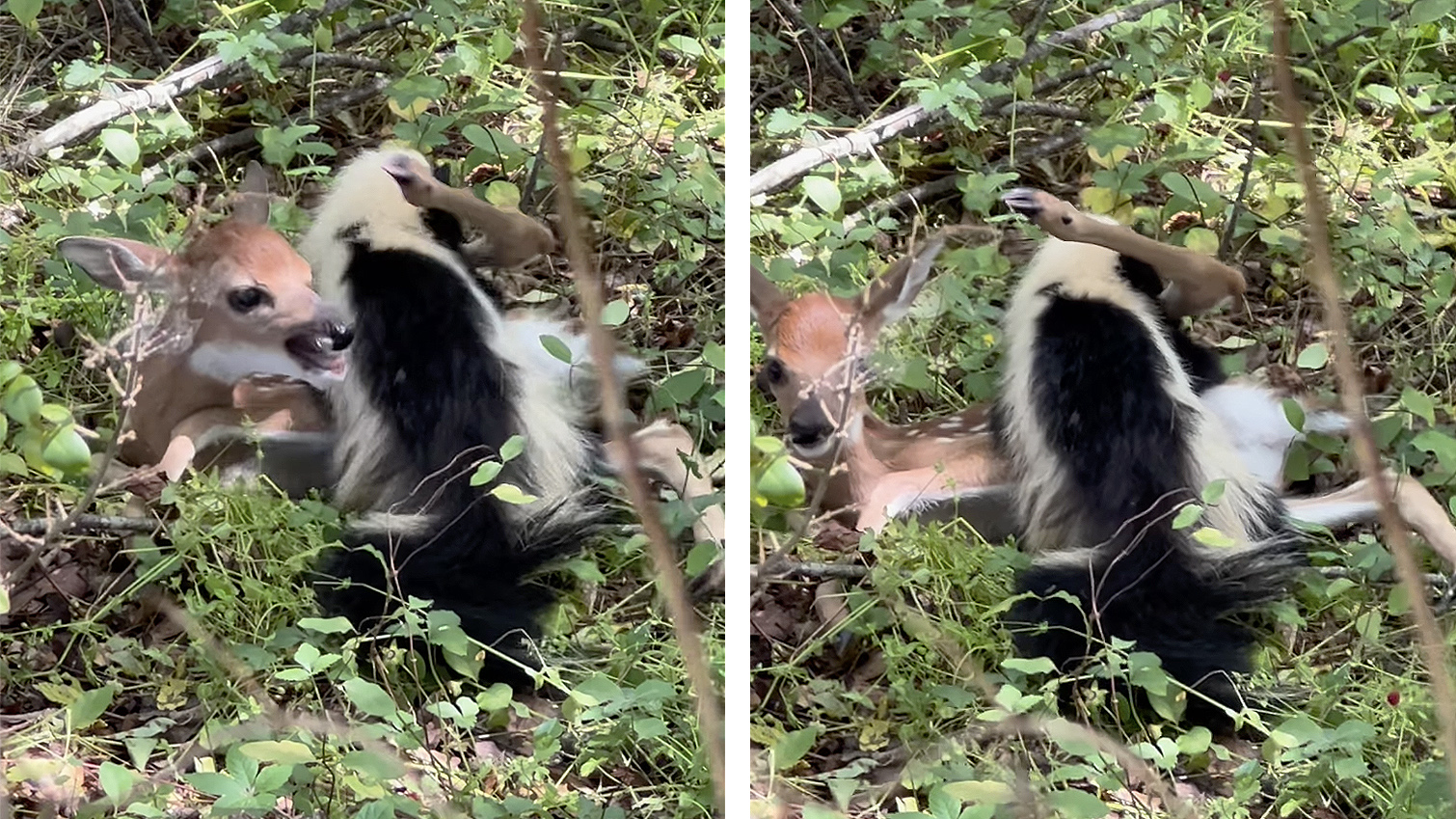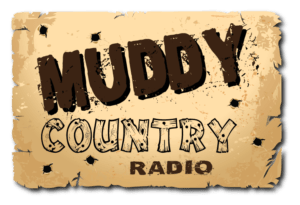
A video showing a skunk preying on a whitetail fawn is making the rounds on social media after a South Carolina man recorded the encounter on May 12 and posted the clip on Instagram.
“INSANE,” writes hunter Joseph Sangl in the caption. “Heard bleating in my back pasture and discovered THIS happening!”
The short clip shows an adult skunk gnawing on the hind leg of a fawn that’s tucked into short cover just behind a barbed wire fence. The fawn appears unable to move, but it bleats repeatedly, clearly in distress. “No wonder it’s hollering,” says one man off camera, while Sangl tells everyone to stay back — no doubt concerned the skunk might spook and spray them.
Fawns are dropping around the country right now and many won’t make it through the spring and summer due to predation. What’s notable is this attack is being carried out by an uncommon predator. It’s not unheard of for skunks to prey on deer, but it is rare.
“Fawns are unfortunately the potato chips of the forest and everybody eats them,” says Lindsay Thomas Jr., director of communications for the National Deer Association. “And any opportunist that comes along — including a skunk — that can find a fawn too small to escape?” That’s what that skunk is doing.”
Many fawns die from natural causes like rainfall, disease, and vehicle impacts. Predation is also relatively common: Research shows coyotes are the No. 1 predator of whitetail fawns, with black bears and bobcats ranking a distant second and third, respectively.
“Any other predator in these studies doesn’t even amount to a percentage worth mentioning in the bar graph,” says Thomas. That includes small mesopredators like skunks, raccoons, and opossums.
And of course, deer have defenses against common predators this time of year.
“In those early weeks the strategy of survival for the doe and the fawn is to stay apart from each other, except for once, maybe twice a day she’ll come and nurse the fawn,” says Thomas. “The doe not being on the scene helps avoid attracting the attention of visual predators like coyotes, who might then locate the fawn.”
This instinctive behavior can work well (unless there are humans around attempting to “rescue” abandoned fawns), especially if the doe remains within earshot of her young.
“If she hears that distress call of the fawn, she’s going to come in and stomp the fool out of anything like a skunk that’s messing with it,” says Thomas, noting that the doe might have done just that if Sangl and his companions weren’t in the area. “Most of the time a small mesopredator … is a minimal issue in most cases. It rarely happens. But still, those are animals that eat carrion and meat and anything else. They’re opportunists.”
That opportunistic behavior was documented at one of NDA’s Field to Fork events in Missouri in 2022, when a new hunter began to approach his first deer just as a skunk crawled onto the dead doe’s back and dug into the backstraps. In that particular case, the hunters were able to toss branches toward the skunk and scare it off without getting sprayed.
Sangl, who did not immediately reply to request for comment, was able to accomplish the same thing and relieve the distressed fawn, writing, “I risked it all on Mother’s Day and chased the skunk away with sticks and rocks without getting sprayed! Fawn ran away fine. Nature is always surprising me.”
This intervention drew a few critical comments (“Please do not interfere with nature. That skunk has babies to raise too”) but you’d be hard pressed to find a hunter or habitat manager who could resist doing the same. From a population standpoint, however, sparing one fawn won’t have any impact on the local deer herd (or the local skunks).
“Some number of fawns die every spring in ways we don’t like to see, and if you’re there to witness it, it’s not pretty. But that is how this works. Predators eat prey, prey are eaten by predators … everybody’s eating somebody else,” says Thomas. “There’s no [deer] management directive that says every chance you get, stop fawn predation. Because this is going to happen, you cannot be out there all the time to intervene. What we can do is provide great habitat.”
In other words, if you want to make sure fawns have the best chance of survival, do what you can to increase habitat quality, provide more cover, ensure there’s abundant nutrition for deer for proper herd health and deer densities.
“After that, the deer take care of themselves,” says Thomas. “Because we provided the best nutrition and cover, the deer population will be okay. They’re a prey animal and some of them are going to die, and that’s okay — [their populations] are built for that. We don’t need to intervene on the individual level. But as a human hunter walking around the woods managing deer, could I sit there and watch a skunk kill a fawn? No, probably not.”
The post Watch: Skunk Tries to Eat a Live Whitetail Fawn appeared first on Outdoor Life.
Michigan’s New Record White Perch Is So Big, It Was Initially Misidentified as a White Bass
Sprawling Lake St. Clair is a hotspot for spring panfishing in southeast Michigan. So, Dr. Steve Smith and his friend and guide Jeremy Ullmann headed there to catch fish for the cooler on April 25. They left a public boat ramp at about 8 a.m. and ran into the lake [...]| Play | Cover | Release Label |
Track Title Track Authors |
|---|
